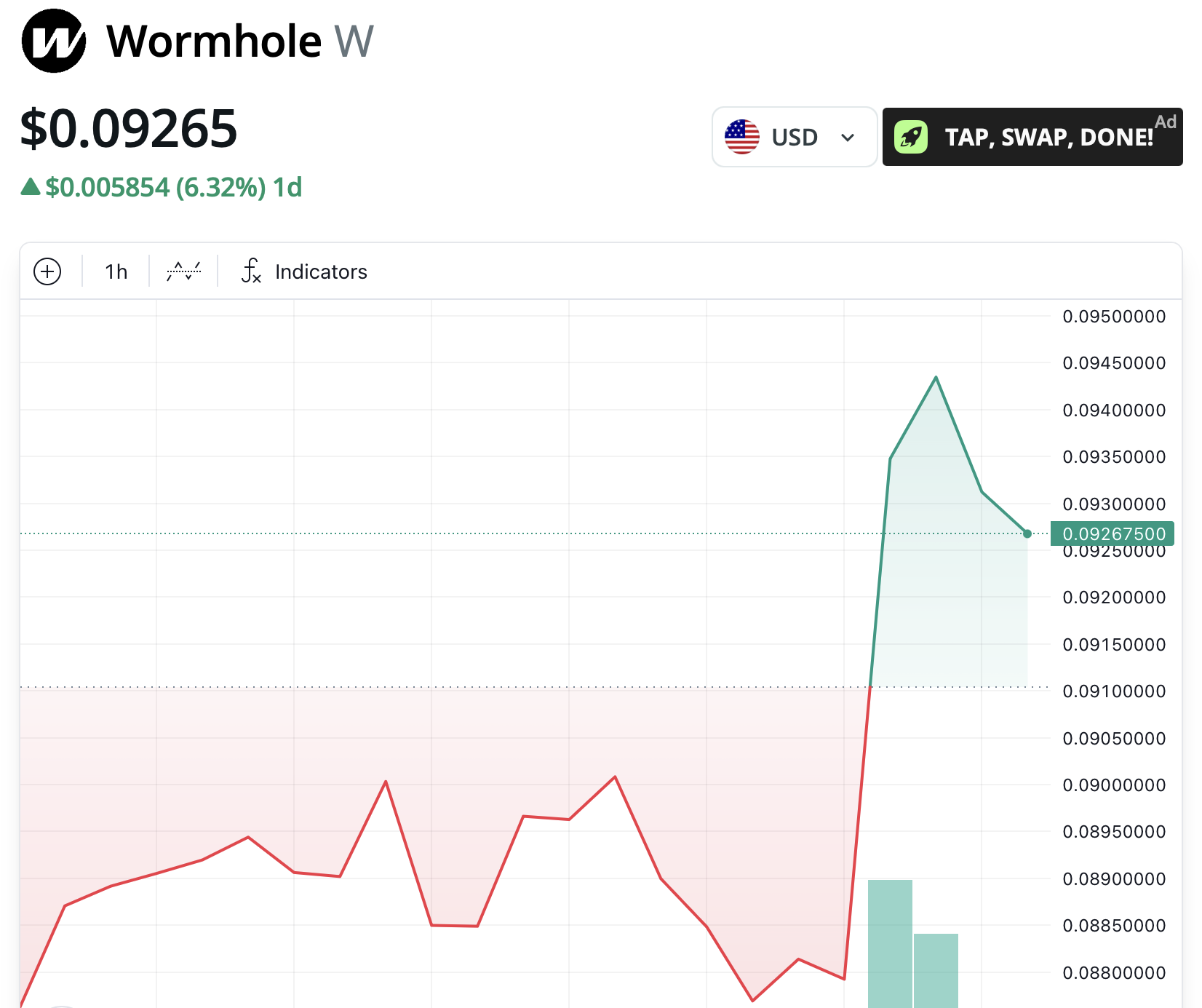Wormhole’s updated tokenomics introduce a protocol-funded W reserve, a 4% base staking yield with higher rewards for active participants, and biweekly unlocks—changes designed to boost staking participation, stabilize circulating supply, and shift governance dynamics for the Wormhole (W) token.
-
Wormhole adds a fee-funded reserve to support token value and staking rewards.
-
Staking now offers a 4% base yield and higher incentives for active ecosystem participants.
-
Token unlocks change from bulk releases to biweekly schedules, improving predictability; $45M currently staked.
Wormhole tokenomics: protocol-funded reserve, 4% base staking yield, and biweekly unlocks—read the update and next steps for W holders. Learn how to stake and what it means for governance.
What are Wormhole’s tokenomics updates and why do they matter?
Wormhole tokenomics now include a protocol-funded W reserve, a 4% base staking yield with bonus rewards for active participants, and biweekly token unlocks. These changes aim to increase locked supply as adoption grows, improve reward predictability, and alter governance power distribution in the Wormhole ecosystem.
How will the W reserve and staking yield affect the token supply and governance?
The W reserve is funded by protocol fees and revenue and will direct additional tokens into staking or treasury functions. A guaranteed 4% base yield for stakers plus higher yields for engaged builders is intended to encourage long-term locking of W and concentrate voting influence among active delegates.
Short-term effect: improved staking demand and reduced sell pressure. Medium-term effect: governance may centralize around major stakers unless delegation diversifies.
Wormhole’s native token has had a tough time since launch, debuting at $1.66 before dropping significantly despite the general crypto market’s bull cycle.
Wormhole, an interoperability protocol facilitating asset transfers between blockchains, announced updated tokenomics to its native Wormhole (W) token, including a token reserve and enhanced yield for stakers. The revision clarifies how protocol fees and revenue funnel into supply management and governance incentives.
According to a Wednesday announcement, three main changes are coming to the Wormhole token: a W reserve funded with protocol fees and revenue, a 4% base yield for staking with higher rewards for active ecosystem participants, and a change from bulk unlocks to biweekly unlocks.
“The goal of Wormhole Contributors is to significantly expand the asset transfer and messaging volume that Wormhole facilitates over the next 1-2 years,” the protocol said. Wormhole expects more tokens to be locked as adoption rises and revenue returns to the protocol.
Founded in late 2020 as a bridge to transfer tokens between Ethereum and Solana, Wormhole launched its native token on April 3, 2024.
The token traded at $1.66 on its debut, but fell to $0.54 within about 10 trading days. The W price rose over 6.3% on the tokenomics revision on Wednesday.

Wormhole token price on Sept. 17, 2025. Source: Cointelegraph
Community response on X (formerly Twitter) was mixed: many praised clearer yield mechanics, while some expressed disappointment that the roadmap omitted a second airdrop or a buyback-and-burn mechanism often used to tighten supply.
Wormhole’s tokenomics directly influence protocol governance. The W token is used to delegate voting power: staked W can be assigned to delegates who then vote on protocol proposals and resource allocation.
At publication, $45 million in W is staked, with 485 million W used in votes. Dan Reecer, co‑founder of the Wormhole Foundation, holds the largest stake—$30.5 million in W—representing approximately 25.1% of voting power.

Source: syndd.eth
Cointelegraph reached out to Wormhole for comment but had not received a reply at the time of publication. Sources referenced for protocol metrics include Wormhole announcements and on-chain voting records (plain text references).
How does Wormhole compete in the interoperability market?
Interoperability protocols, including Wormhole, sit at a pivotal point in crypto: enabling assets and messaging across multiple blockchains. This functionality is essential for stablecoin issuers and RWA tokenization projects that require cross-chain deployment.
Competitors in this sector include Chainlink (cross-chain messaging), LayerZero (omnichain messaging) and Axelar (interoperability protocol). These projects vary by architecture but share the goal of secure cross-chain asset movement.
Frequently Asked Questions
How much W is currently staked and who holds the largest stake?
Approximately $45 million worth of W is staked, and Dan Reecer, co‑founder of the Wormhole Foundation, is the largest single staker with roughly $30.5 million in W (about 25.1% of voting power).
Will Wormhole introduce a buyback or a second airdrop?
The latest roadmap did not include a buyback or second airdrop. Community feedback on X noted disappointment at the absence of those supply-reduction mechanisms.
Key Takeaways
- Reserve added: Protocol fees now seed a W reserve to support rewards and treasury functions.
- Staking incentives: 4% base yield with higher rewards for active contributors to encourage locking.
- Unlock cadence: Biweekly unlocks aim to improve supply predictability and reduce market shocks.
Conclusion
The Wormhole tokenomics update—introducing a fee-funded reserve, a 4% base staking yield, and biweekly unlocks—prioritizes staking growth, supply management, and clearer governance incentives. W holders should monitor staking flows and delegate distribution as these changes play out; for operational updates, follow official Wormhole announcements and on-chain metrics.






